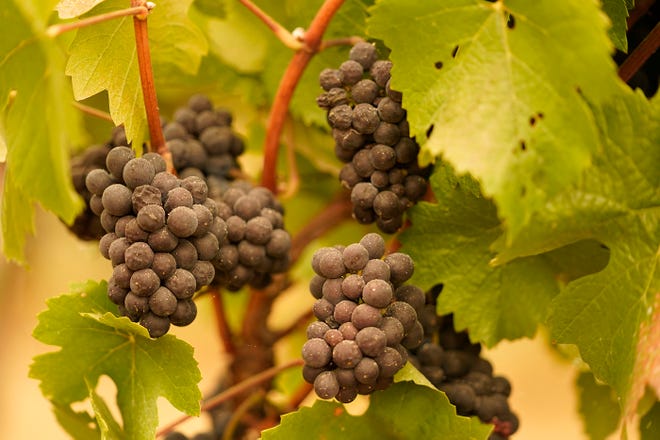Is the jury still out on 2020 West Coast wines?

Photo by Eric Risberg, Associated Press, 2020 https://muckrack.com/ericrisberg
2020. For those of us who have been living through the pandemic and understand the personal and economic toll it’s taken, it seemed like nothing could make 2020 worse. Wine tasting rooms were shut down. Vineyards struggled with grape harvests and staff shortages. Restaurants and their workers lost jobs, wages and customers. If there was a silver lining in all of this, it’s that the entrepreneurial spirit of vintners and wineries went into overdrive. Wine producers grew their Direct to Consumer (DtC) sales channels of bottles priced under $30. DtC wine market sales increased by 41%(1) during 2020.
Just when there seemed to be light at the end of the tunnel with the pandemic – California, Washington and Oregon experienced an additional devastating threat to life and property and to the regional wine industry. Massive forest fires ravaged the grape harvests across multiple states. Conventional wisdom would dictate that much of the 2020 grape harvest was lost for these regions. Wine industry expert, Austin Beeman, during his talk at the 2021 Wine Media Conference in Eugene Oregon, opined about what could happen in the marketplace as a result of a significant volume of smoke tainted grapes. Cyril cautioned that much of the smoke tainted grape harvest could find its way into lower prices wines. Many wondered if some of the small wineries may not be able to effectively detect smoke taint and those affected grapes could end up being made into wine and bottled. This very well could result in a glut of smoke tainted wine in the lower tier priced market.
There are some instances where the vineyards were covered in smoke but not long enough such that someone eating grapes from a cluster could detect obvious signs of smoke taint. The intensity of the smoke, duration of the exposure and freshness of the smoke contribute to lasting effects by producing volatility known at phenols. Phenols are a mildly acidic crystalline solid created from the tar in smoke. The first 7 days following veraision (when the colors of the grape berries change) can be the most impactful. Phenols can settle in the vines and or grapes producing a smoky flavor when the wine is produced. When visual and taste methods don’t provide an obvious signal of smoke taint, wineries can use analytic testing performed in commercial labs and sensory evaluation where a small batch of wine is fermented to determine the impact of smoke. Both methods used together are the most effective means currently available to determine if a harvest can be saved. (2)
One Oregon producer, Pfeiffer Winery, host of a Friday night 2021 Wine Media Conference excursion, discussed the use of filtering techniques to minimize the impact of smoke taint on a harvest. The key for this small lot producer is to apply minimal filtration to the grape juice to remove phenol impurities without jeopardizing the quality of the wine.
Saving the harvest may not always be possible. Severely tainted wines may not be filterable, or the filtering may be overdone leaving the consumer with a disappointing experience of the wine that could risk the reputation of the winery. Other techniques involve the way the harvest is picked – hand-picked versus using machines and not destemming the clusters. Adelsheim Vineyards out of the Willamette Valley in Oregon announced in the Portland Business Journal that they would not make any Pinot Noir from the 2020 harvest due to smoke taint. Great wineries stand out from those wineries that feel pressured to produce lesser quality wines. Much of this lesser quality wine gets channeled to the lower priced market.
This is where being an educated consumer becomes important. Understand what to look for in the lower priced bottles of wine from 2020 to determine whether they may have had some smoke impact. Some have, others haven’t. Wineries who presented their 2020 vintages at the Wine Media Conference implored writers to not write the entire vintage year off – they’ve produced some great wines at all price points. Take the time to read unbiased reviews from wine writers, participate in tastings at the local wine stores and when in doubt stick with the wines that you enjoy most.
(1) 2021 Direct to Consumer Wine Shipping Report, Wine Vines Analytics, 2021.
(2) Smoke Impact in Grapes and Wine, ETL Laboratories, 9/6/2020.
Remember to drink what it is that makes you truly happy and always think positively!
Drink Responsibly!